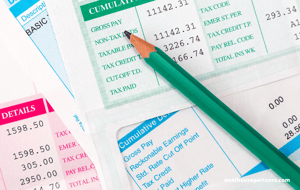Self-Certification Sickness
Understanding the purpose and function of the self-certification sickness form is vital for all employers. Read more here.
James Rowland
Commercial Director James leads Account Management, Sales and Marketing at Neathouse Partners.Date
15 May 2019Updated
07 August 2024
Table of contents
Related articles
Staff absence is a major issue for any company, while employee wellbeing is a significant responsibility.
Therefore, the business’s sickness policy should be considered an essential feature of the continuous running of any business. As such, understanding the purpose and function of the self-certification sickness form is vital.
This remains an area that confused employers and employees alike. The following information should provide some clarity.
What Is The Self-Certification Sickness Form?
The self-certification sickness form, officially called Employee’s statement of sickness (SC2) by HMRC, is an online form that employers can ask employees to fill out to record the details of their absence.
This includes information about the length of their sickness as well as the type of illness or injury.
Self-certification sickness forms can be downloaded from the HMRC website, or you can create your own template.
Either way, the self-certification part of the name confirms that a doctor’s note is not required. Instead, the employee’s word will be good enough.
Why Are Self-Certification Sickness Forms Useful?
The use of self-certification sickness forms are benefits for companies. Employers can track the number of sick days as well as the reasons given by an employee.
The information can then be used when making a variety of crucial business decisions, such as when dealing with a redundancy process.
When Can Self-Certification Sickness Forms Be Used?
Self-certification forms are designed primarily to explain and record short-term staff absences rather than anything serious. Employees can be asked to fill them out when they are ill for seven days or fewer.
This seven-day period includes the days in which they are not required to work. For example, a Monday-Friday office worker that is off for the full week and the following Monday has been off for eight days, meaning they cannot use the form.
When an employee is absent for no more than seven days, the employer can request a self-certification sickness form for each day.
Given that it’s an online form, filling it out for subsequent days is a straightforward task.
Handling Staff Sickness That Lasts Over Seven Days
When the employee loses more than a week (including the days they aren’t scheduled to work) due to illness or injury, employers can request an official sick note – officially known as the Statement of Fitness for Work.
Sick notes can be provided by a GP or hospital medical teams, including doctors and nurses.
If you have asked for medical proof for an illness of over seven days, it is possible to withhold Statutory Sick Pay (SSP) payments until confirmation has been provided.
The request of both self-certification and sick notes protects the business from employees that may otherwise try to take advantage of the situation. With this element under control, those fears are a thing of the past.
Related blog posts

Guide to supporting and accommodating employees with chronic migraines

Health, safety and sitting versus standing in the office

How to support mental health at work
Have questions?
Get in touch today
Contact us, and our team will get back to you within 24 hours. We value your questions and are committed to getting them answered quickly.


Hello! I am Nicky
Just fill in the form below with your details, and I will arrange for a member of our team to give you a call.
By clicking, you agree to our Privacy Policy





